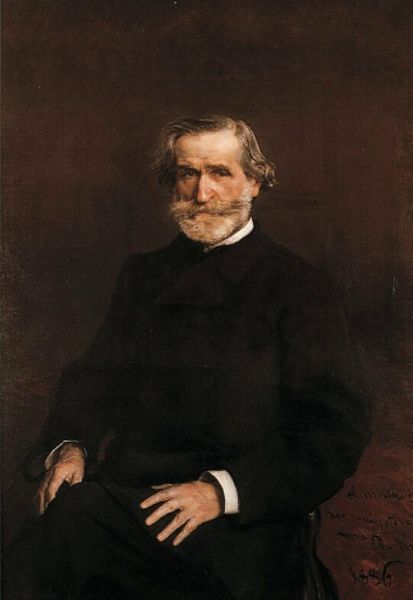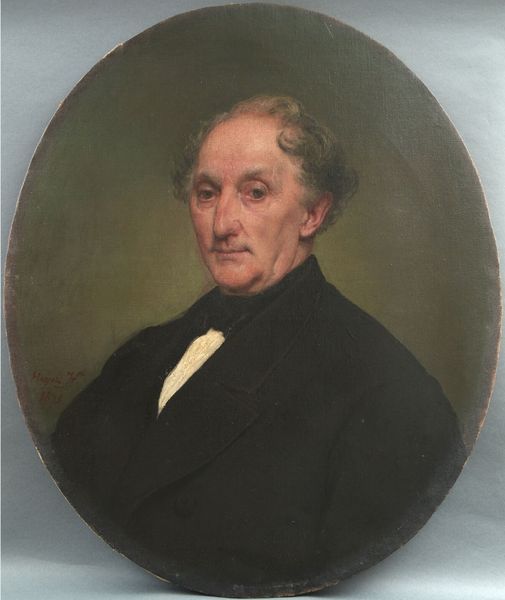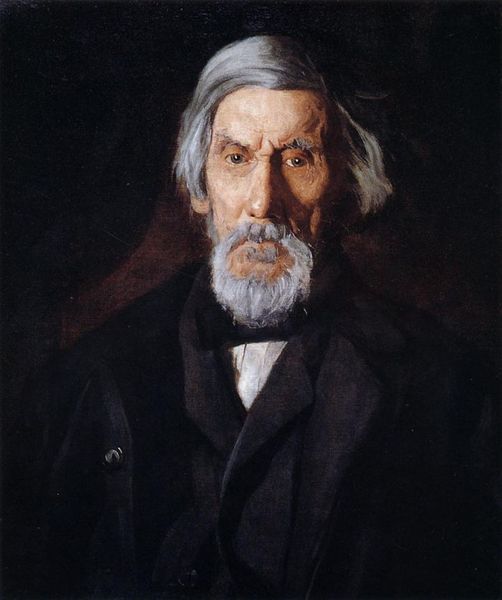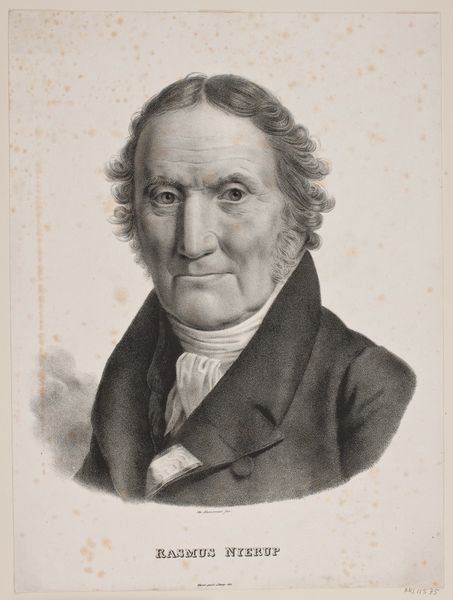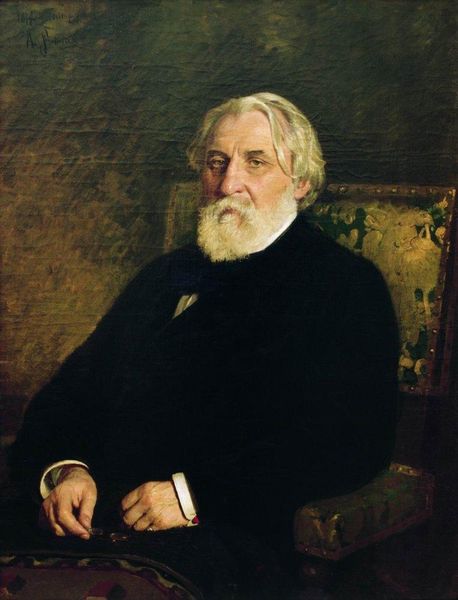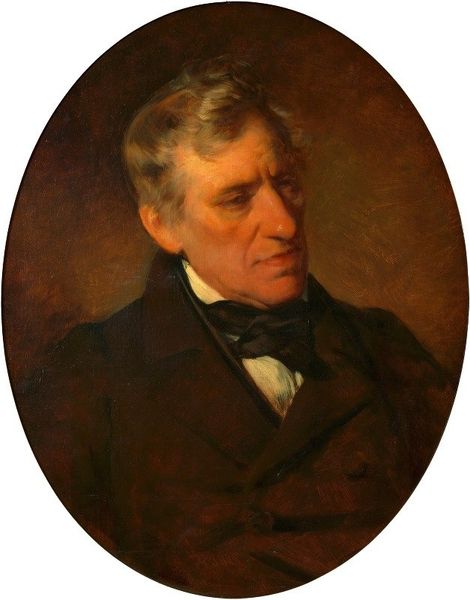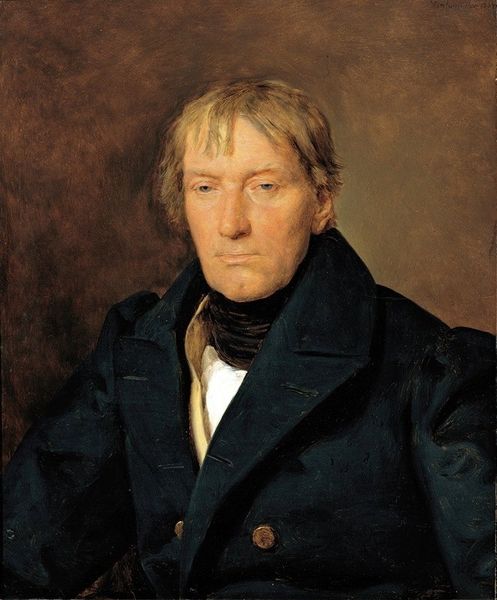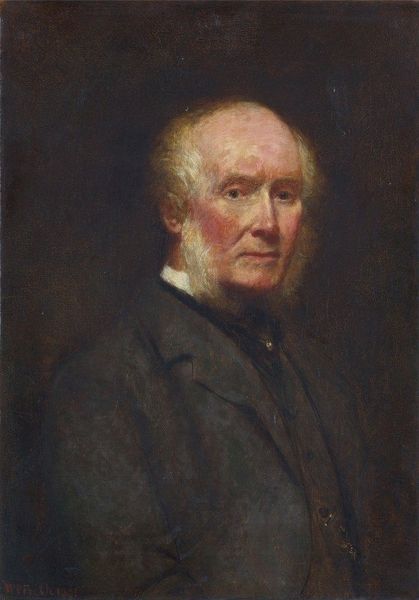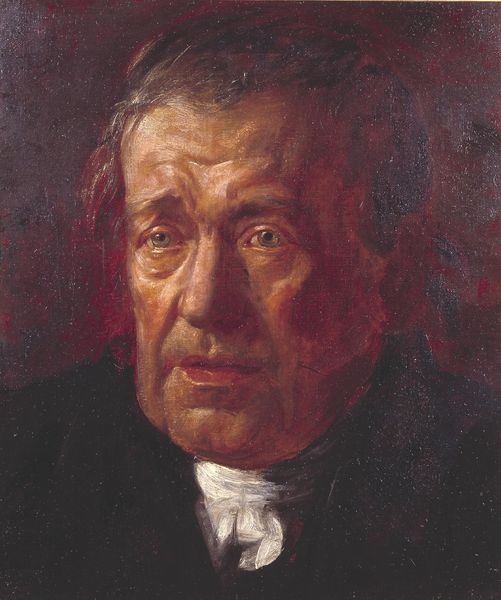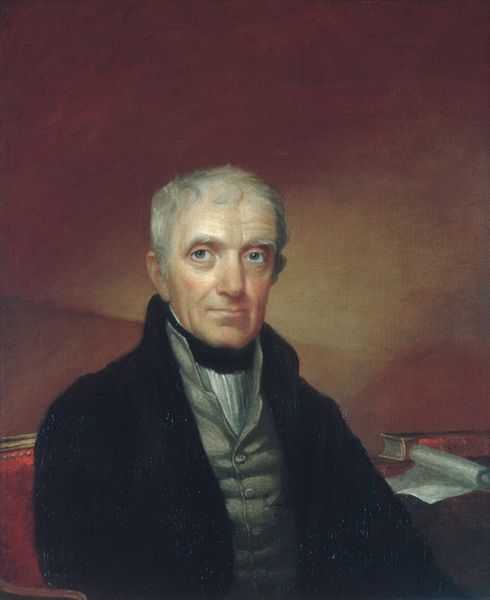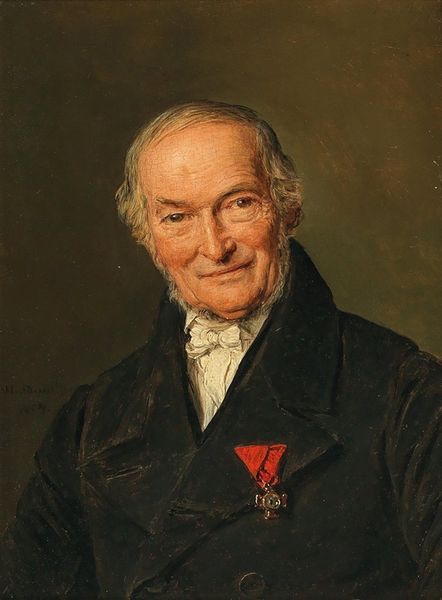
Portrait of an elderly gentleman wearing a black overcoat, white shirt and a necktie 1851
0:00
0:00
Dimensions: 50 x 42 cm
Copyright: Public domain
Editor: This is Carl Bloch's "Portrait of an Elderly Gentleman," painted in 1851 using oil paint. I’m struck by how real and present this man feels, despite being painted so long ago. The artist captured so much detail in his face, but the brown background and clothes give a somber tone to the piece. What kind of context should viewers be aware of? Curator: It is essential to think about what purpose portraits like this served. Consider the burgeoning middle class in 19th-century Europe, especially in countries like Denmark, where Bloch was active. As photography was in its early stages, painted portraits functioned as markers of social standing, conveying respectability and achievement, but also solidifying identities, sometimes projecting idealized visions. Editor: So, this wasn’t necessarily a true likeness, but also an assertion of identity? Curator: Precisely. Bloch’s academic style was valued and served the desires of this rising social class. We must ask who commissioned this painting and what message they intended to send. Does his somewhat stern expression indicate a person of importance? Notice also that the composition focuses attention on his face as a marker of intelligence and experience, and downplays elements of adornment. Editor: It's interesting how much social weight is packed into a portrait like this, things that I may not have picked up at first glance! Curator: Absolutely. Consider the art market's influence and how academic painting helped legitimize certain kinds of representation and subjects, influencing social perceptions in Denmark and beyond. It is not just a likeness, but a performance of social status. Editor: Seeing this painting as more than just a representation is such a helpful frame for thinking about other artworks, as well. Thanks!
Comments
No comments
Be the first to comment and join the conversation on the ultimate creative platform.
